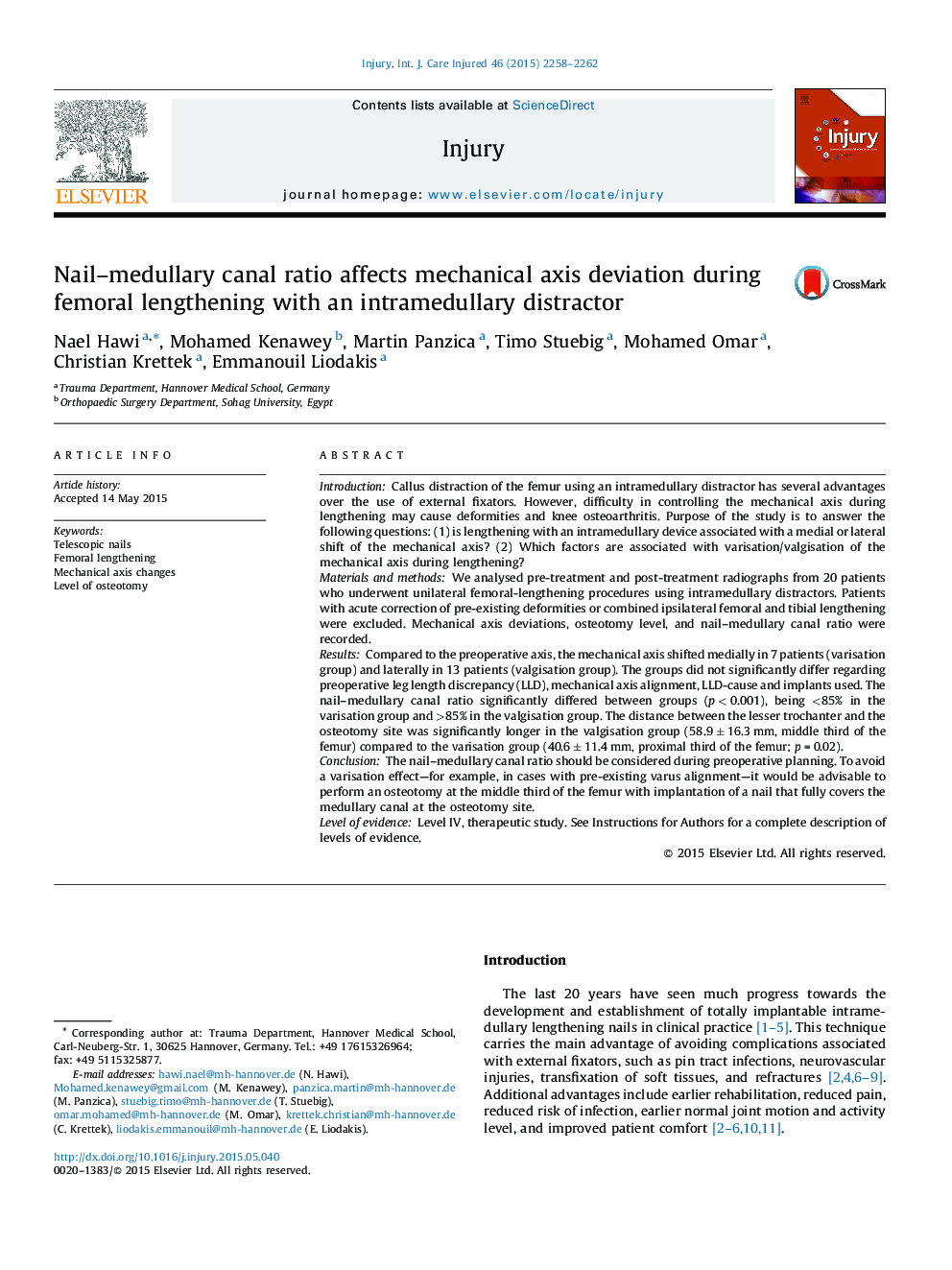| Article ID | Journal | Published Year | Pages | File Type |
|---|---|---|---|---|
| 3239225 | Injury | 2015 | 5 Pages |
IntroductionCallus distraction of the femur using an intramedullary distractor has several advantages over the use of external fixators. However, difficulty in controlling the mechanical axis during lengthening may cause deformities and knee osteoarthritis. Purpose of the study is to answer the following questions: (1) is lengthening with an intramedullary device associated with a medial or lateral shift of the mechanical axis? (2) Which factors are associated with varisation/valgisation of the mechanical axis during lengthening?Materials and methodsWe analysed pre-treatment and post-treatment radiographs from 20 patients who underwent unilateral femoral-lengthening procedures using intramedullary distractors. Patients with acute correction of pre-existing deformities or combined ipsilateral femoral and tibial lengthening were excluded. Mechanical axis deviations, osteotomy level, and nail–medullary canal ratio were recorded.ResultsCompared to the preoperative axis, the mechanical axis shifted medially in 7 patients (varisation group) and laterally in 13 patients (valgisation group). The groups did not significantly differ regarding preoperative leg length discrepancy (LLD), mechanical axis alignment, LLD-cause and implants used. The nail–medullary canal ratio significantly differed between groups (p < 0.001), being <85% in the varisation group and >85% in the valgisation group. The distance between the lesser trochanter and the osteotomy site was significantly longer in the valgisation group (58.9 ± 16.3 mm, middle third of the femur) compared to the varisation group (40.6 ± 11.4 mm, proximal third of the femur; p = 0.02).ConclusionThe nail–medullary canal ratio should be considered during preoperative planning. To avoid a varisation effect—for example, in cases with pre-existing varus alignment—it would be advisable to perform an osteotomy at the middle third of the femur with implantation of a nail that fully covers the medullary canal at the osteotomy site.Level of evidenceLevel IV, therapeutic study. See Instructions for Authors for a complete description of levels of evidence.
